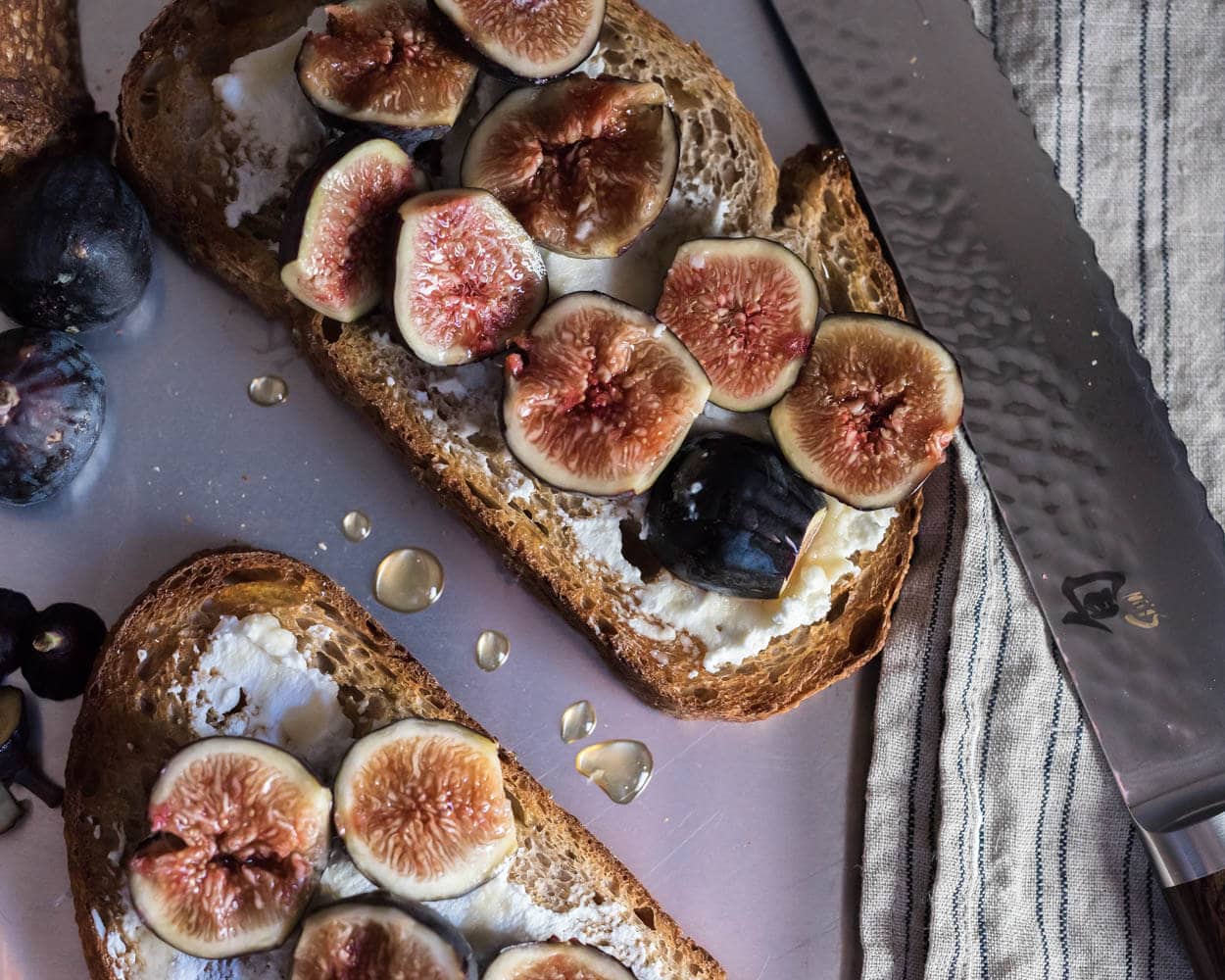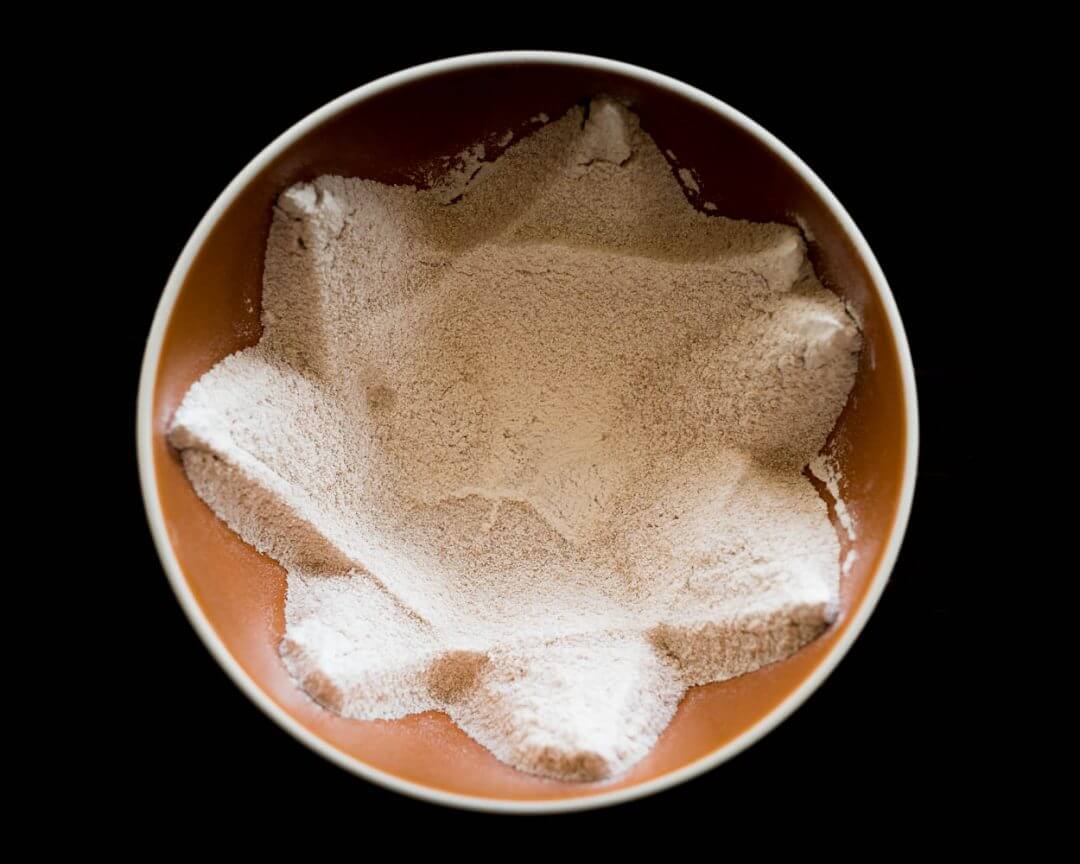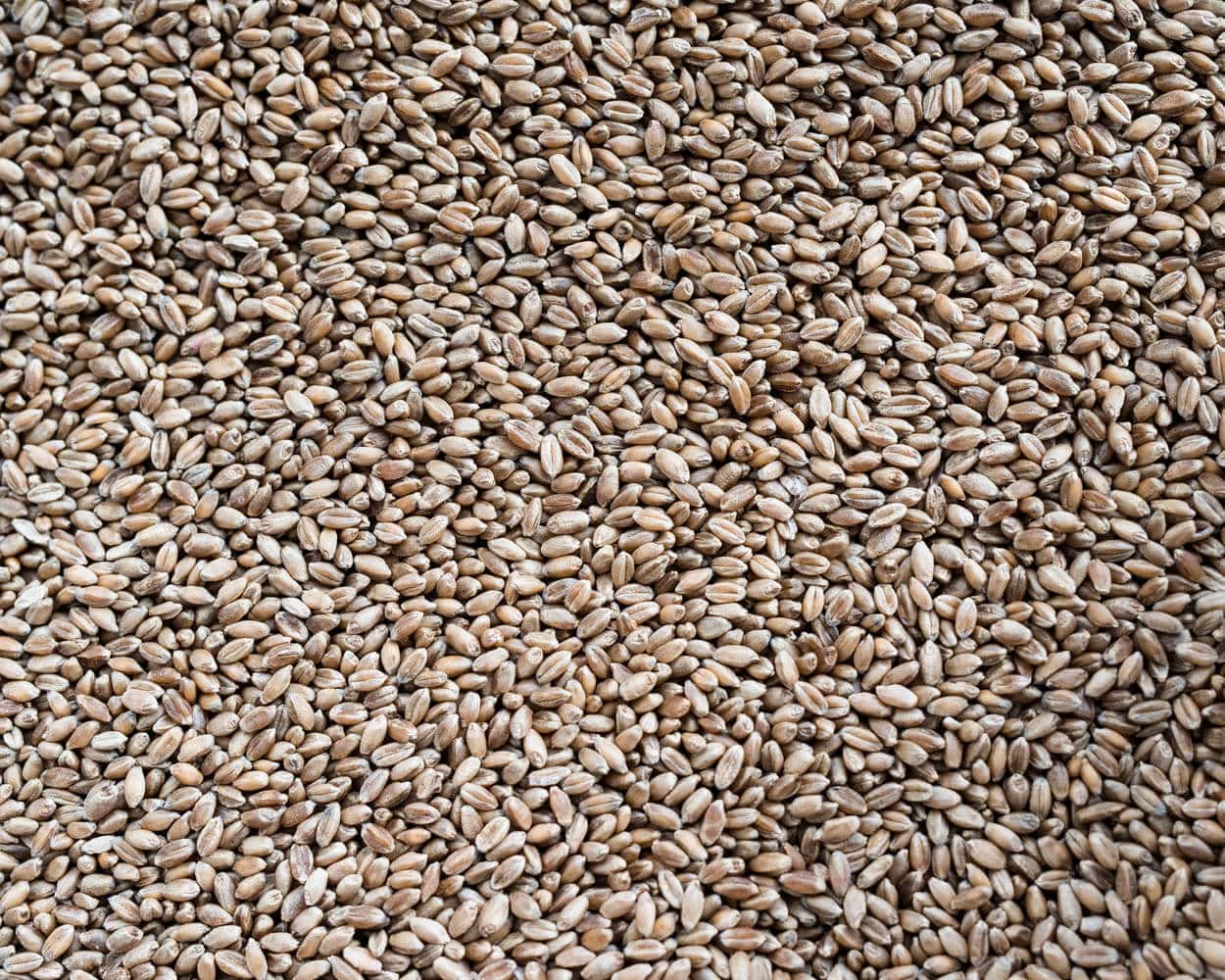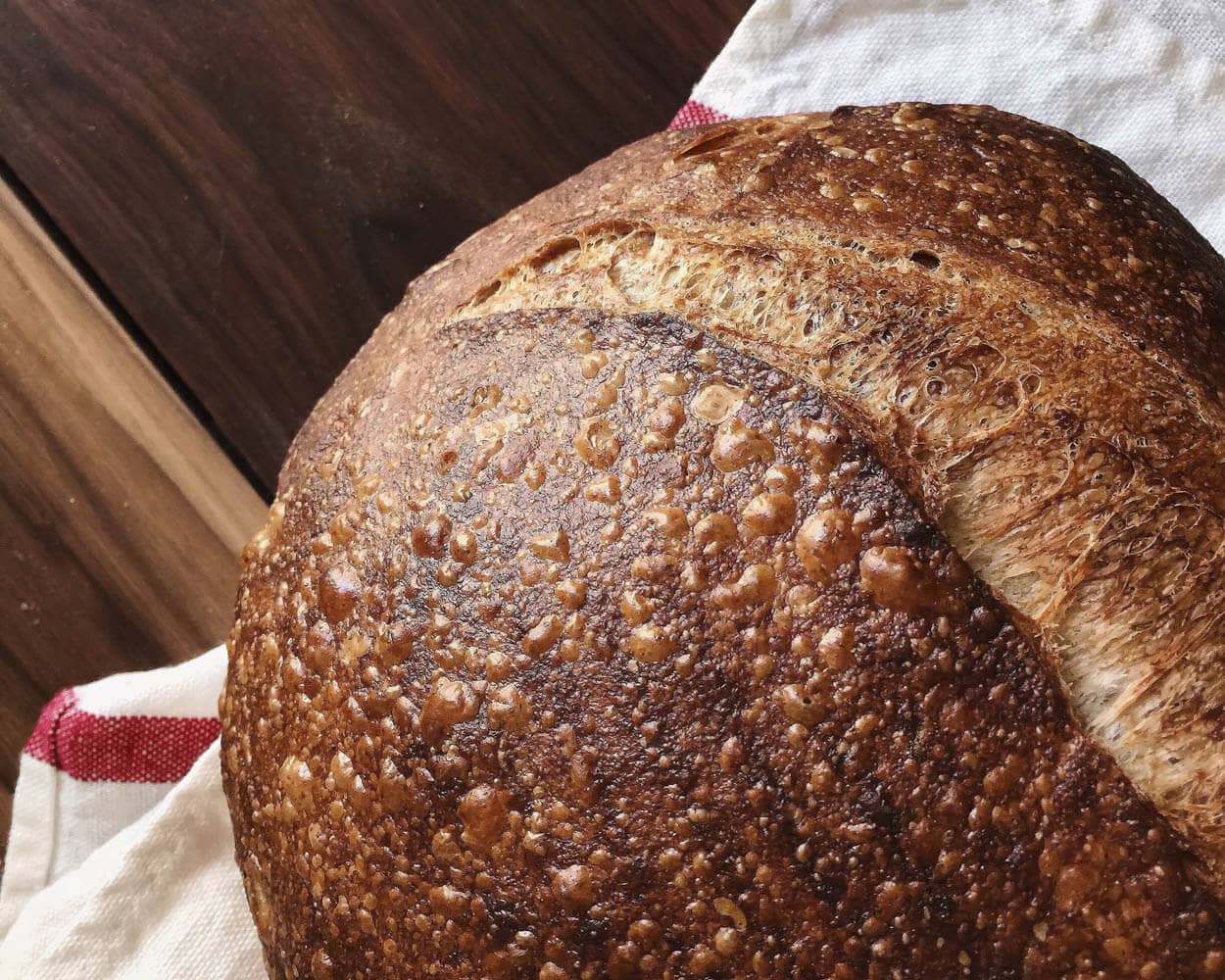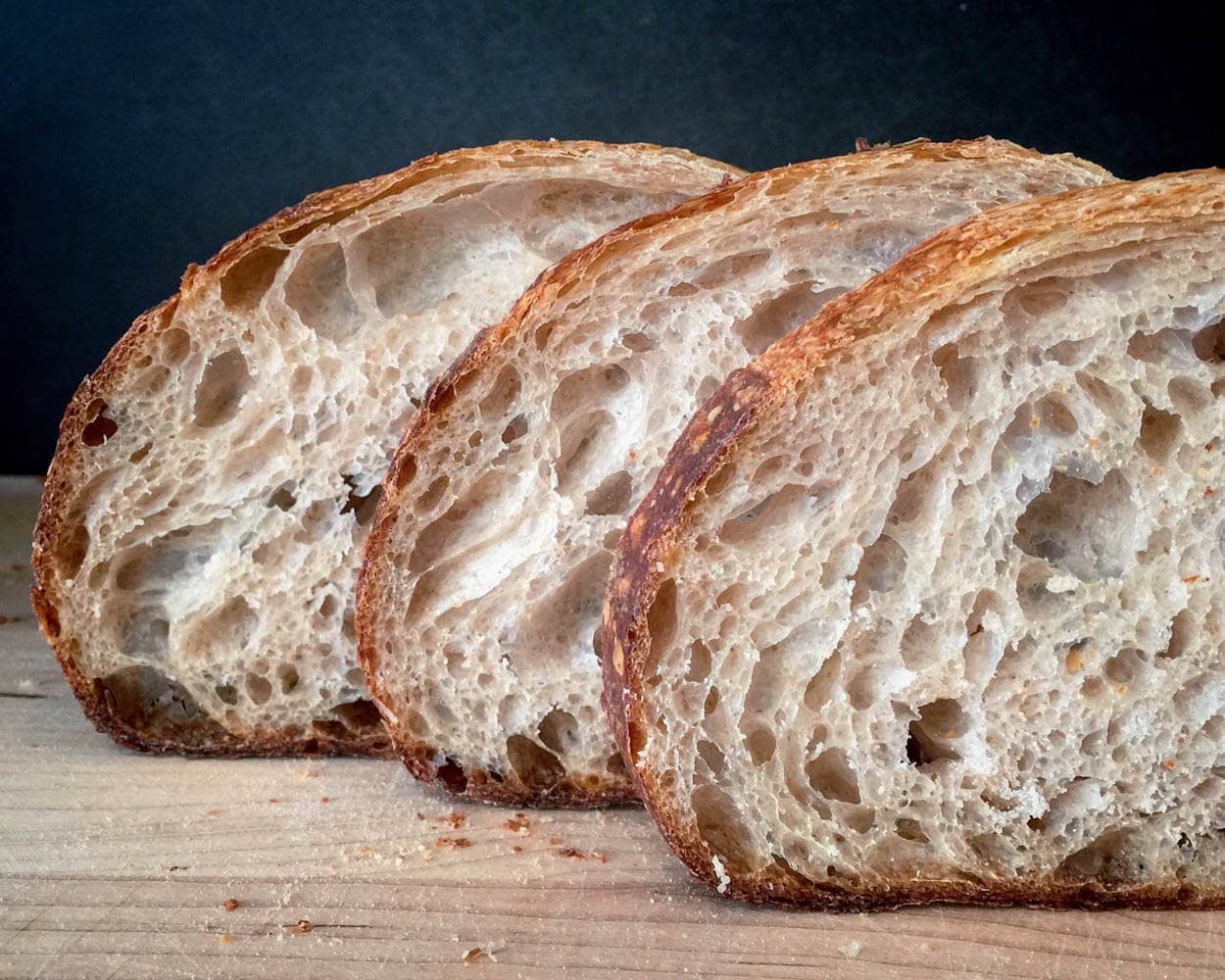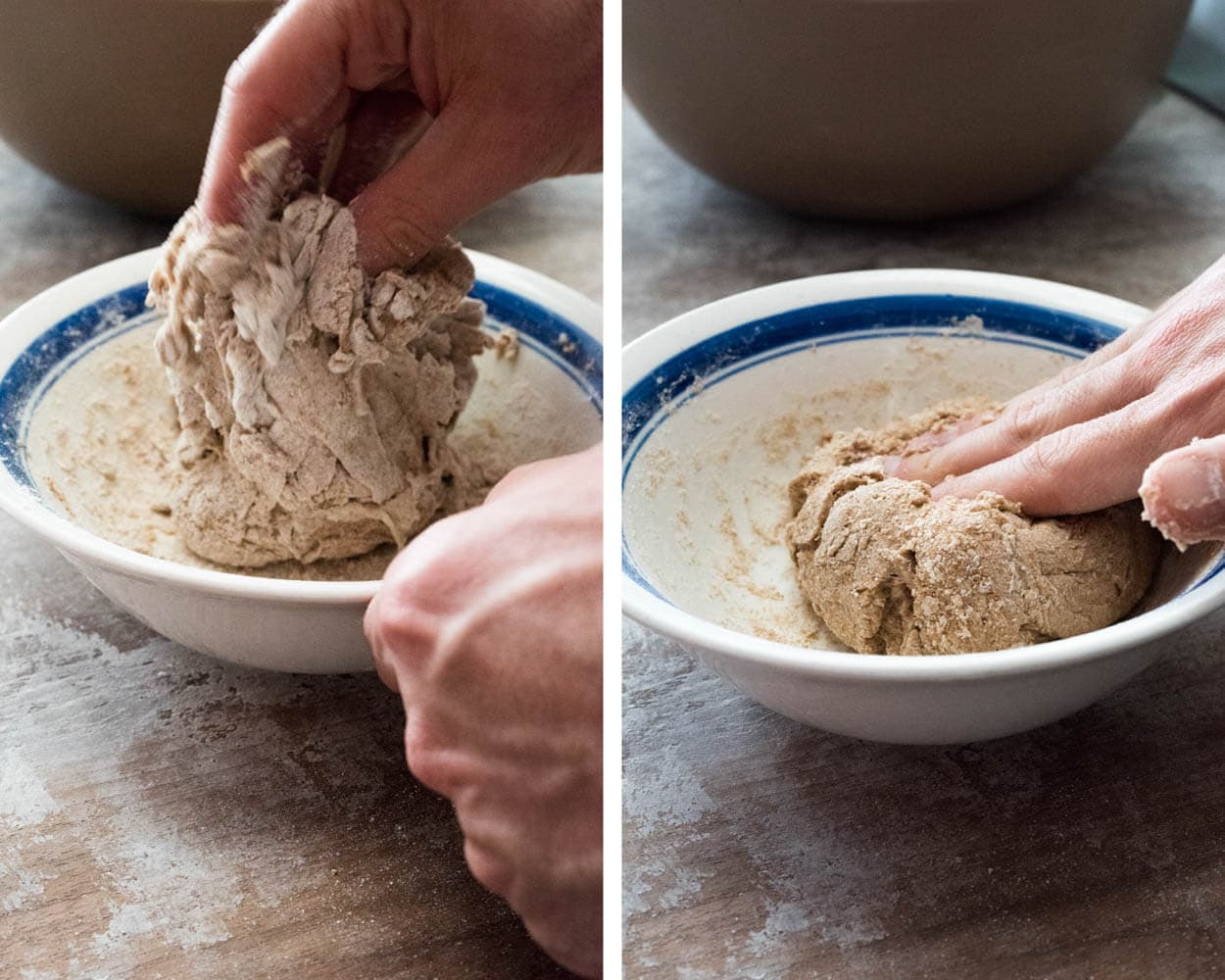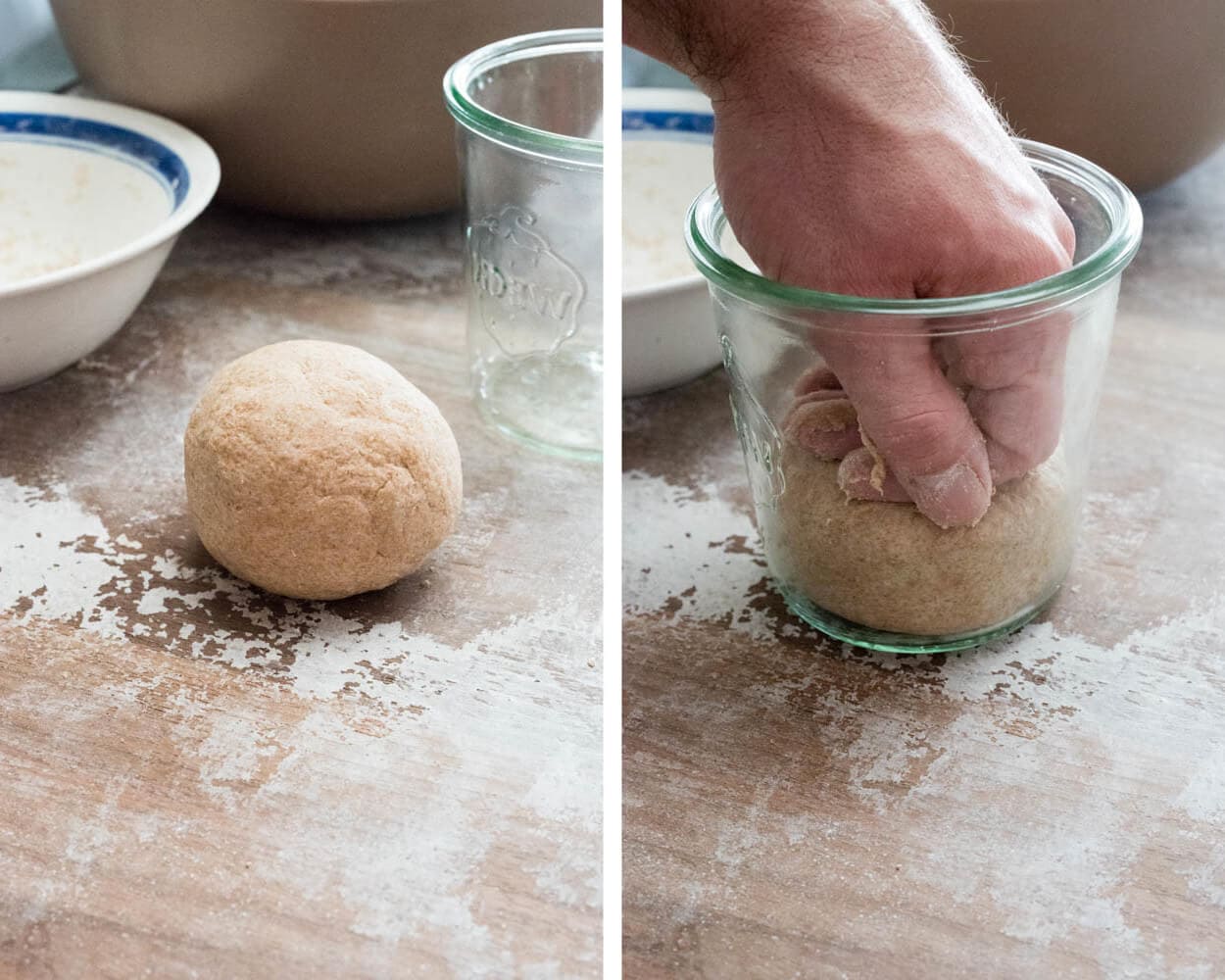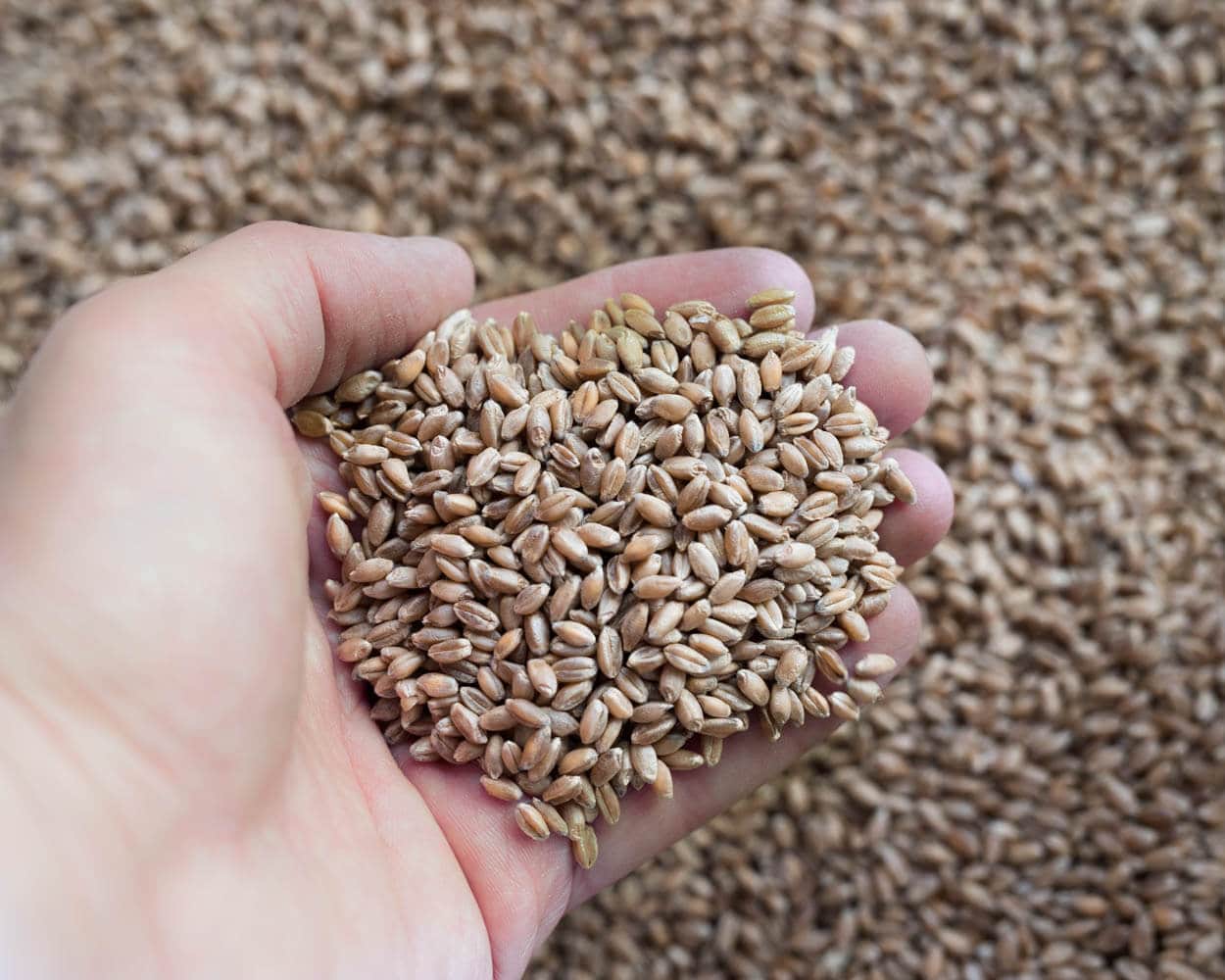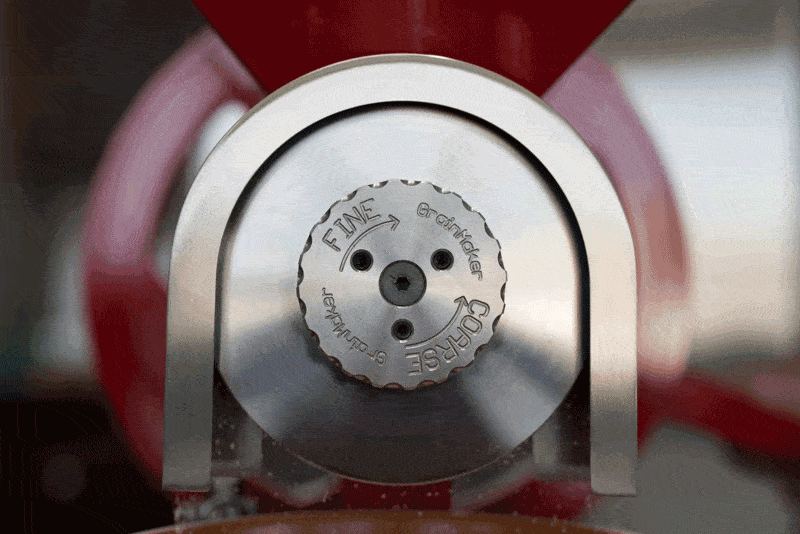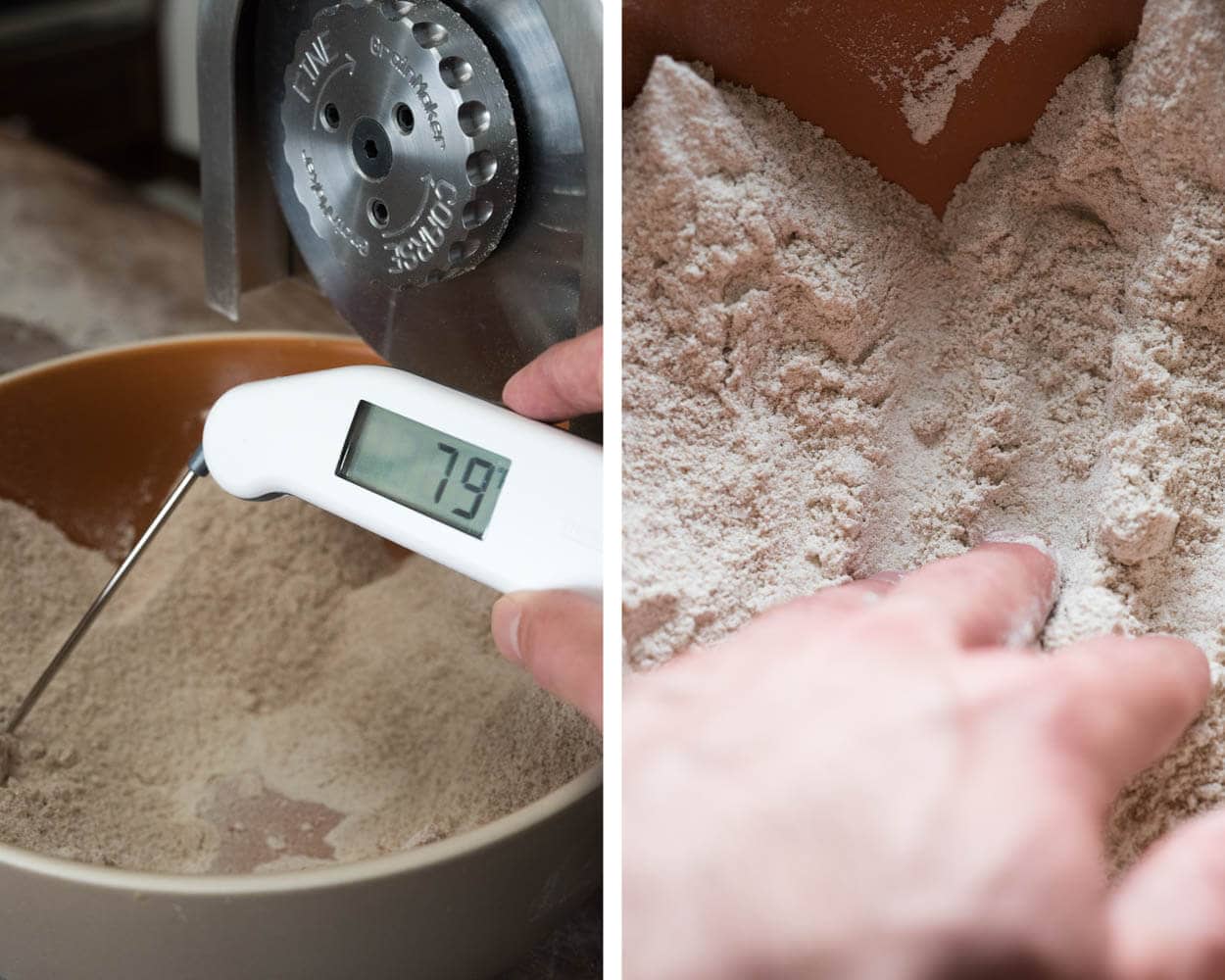“You’re so crazy,” I heard my wife whisper in the background as I unearthed the great red beast from its box marked “Extremely Heavy.” The beast, a GrainMaker Model No. 116 hand-cranked mill, was carefully packaged and shipped across the country from a small place in the Midwest where everything was made and assembled by hand. It exuded quality and craftsmanship. As I placed the large, shiny apparatus on my kitchen counter, I tried to hold back my excitement and eagerness to start baking sourdough with freshly milled flour.
But is my wife right: am I crazy to have a flour mill in our kitchen? Throughout history, communities were centered on the flour mill. People would gather when the mill was finished grinding berries into wheat and pick up their fresh flour to bake with it straight away. These mills were life-giving to the community. Is it so different to have a mill in your own home and bake with fresh flour? While the importance of bread may or may not be the same today as it was back then, there’s certainly a list of things to be gained by baking with freshly milled flour, and for me, the taste is at the top.
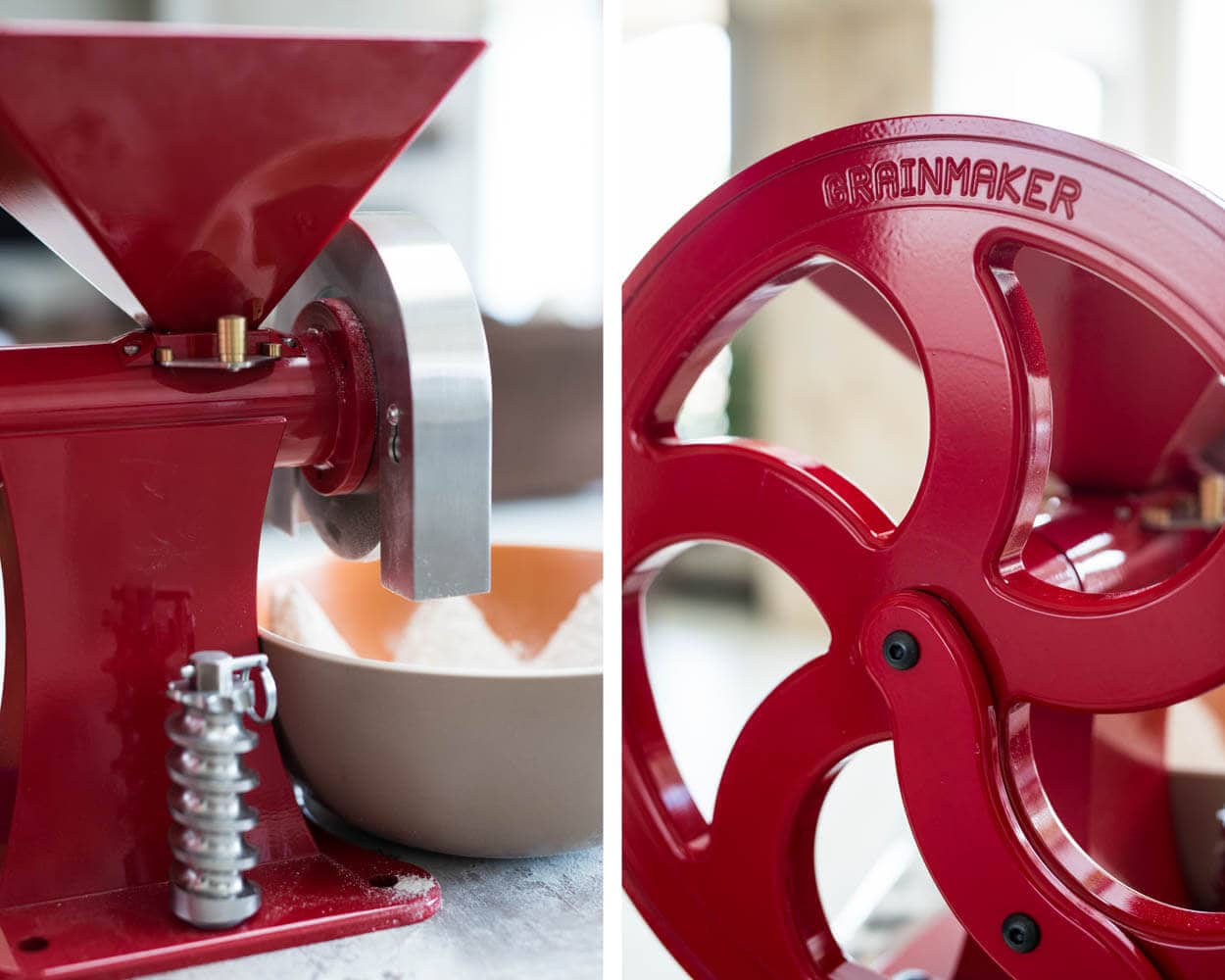
The GrainMaker allows me to produce some incredibly fine flour, but milling is not a speedy process: it takes me between 10 and 20 minutes to mill about 1 kilogram of flour (depending on how fine I decide to grind, and how strong I’m feeling that morning). While my proficiency improves each time I use the mill, the physical process of milling is part of the enjoyment for me. It’s that missing step in baking, the transformative part that takes each seed from field to bread. But perhaps most importantly, the resulting flour is spectacularly fine, light, and the aroma, it’s intoxicating. Milling that first batch of flour was a real awakening: who knew flour could smell like this?
What was my motivation for milling my flour? Several things captivated me after reading numerous articles and first-hand accounts of people milling at home: economics, the overall increase in freshness, health benefits, and king of them all, the taste.
Benefits of Freshly Milled Flour
The benefits of milling your wheat are numerous. First, buying whole, raw berries makes financial sense compared to milled sacks of wheat: not only are they cheaper but buying in bulk typically will save you even more. When stored properly (a cool, dry pantry devoid of light) the shelf life of raw wheat berries is incredibly long—years long, so ordering an excess is never a problem. For a home baker like me, this can be a real advantage as I can store 50 pounds of wheat berries almost indefinitely and not have to worry one bit about them spoiling. I typically bake two to three times per week, and I have no problem churning through a 50-pound sack of flour, but it’s nice to have fresh flour and mill only what I need for the next bake. But if you are a sporadic baker it might make even more sense, mill what you need and the rest will stay fresh long into the future.
Milling your own flour, without sifting, means you will retain 100% of the same wheat berry in your end product. Many mills will indicate on their packaging that you’re buying whole wheat, but that doesn’t always mean whole grain. Additionally, they will sometimes perform several milling passes, especially on the germ and bran which are sifted out and then later added back in, reconstituting back to 100% of its original weight. I’ve read several accounts where bakers say there is something different about the taste, nutrition—and it simply does not perform the same as freshly milled flour milled in a single pass (see Peter Reinhart’s latest book, Bread Revolution).
Studies show that freshly milled flour provides added nutrients to your diet compared to aged flour. To start, bread baked with freshly milled flour has higher vitamin and fiber levels in resulting loaves1. Further, foods exposed to oxygen (oxidization) for prolonged periods will result in nutrient loss, and in this case beneficial minerals and oils2. Once the wheat berry is milled, breaking open that protective bran layer, oxidization begins which causes nutrients to degrade slowly. While we do not eat bread primarily for its vitamin content (compared to say, spinach), but rather more for proteins, fiber, and carbohydrates, it is great to know that bread baked with freshly milled flour retains more vitamins and nutrients than we might otherwise get.
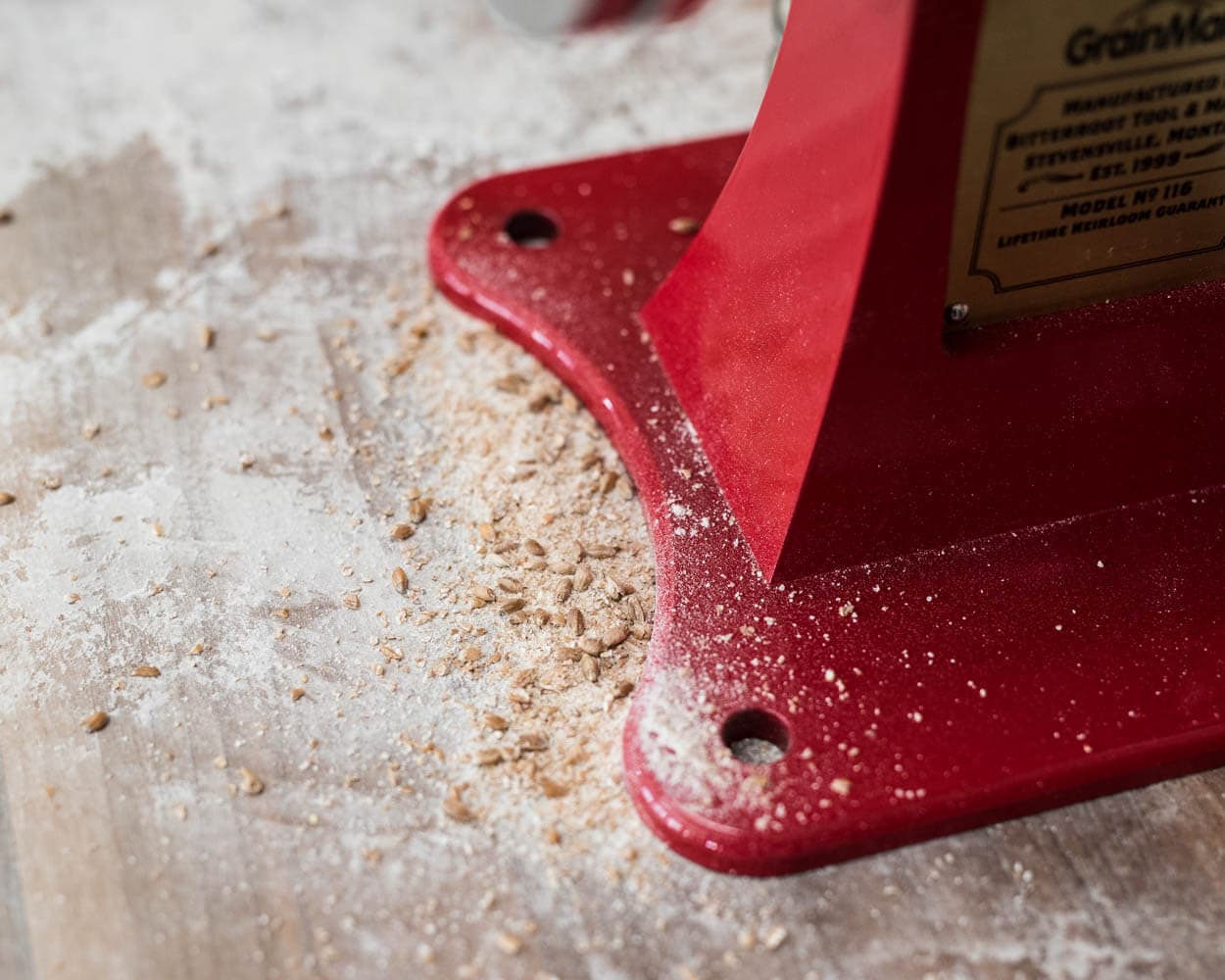
With all that said, it’s easy to get caught up in a debate on the exact percentage of vitamin and fiber retention, but to me, those are beneficial side effects of a more substantial motivating factor: taste. It’s much better to focus on the fact that this bread is just plain delicious (and, in some possibly unquantifiable way, healthier). Let’s talk about the taste.
The Taste of Freshly Milled Flour
Great taste is, of course, something we always strive for when baking, irrespective of what flour we are using, but the bread I’ve baked with freshly milled flour is a world apart from other bakes. It starts with the smell during milling—an aroma that reminds me of heavy cream or panna cotta. I never knew wheat could smell like this and it’s captivating. When you smell aged flour, it might have a particularly sweet smell, but there’s something more here, something I wasn’t expecting the first time I milled. You’re hit a second time with this beautiful aroma right when you get your hands in and mix with water, it wafts up from the cream-colored mixture and lingers with you through the mix.
I like to equate milling flour to grinding your own coffee beans. Once you taste the results there’s no alternative.
When I bake my typical sourdough bread with added freshly milled flour, it takes on added levels of flavor complexity, a taste that is hard to capture in words but brings a smile to my face. The crust becomes incredibly thin and crackly with a forward shine to it, a shine that almost looks as if I had smeared the bread with olive oil and then baked it. The interior of my loaves are tender, light, and with a vibrant flavor. I’ve read others describe this flavor as “nutty” or “grassy,” and I’d agree, it’s fresh and alive.
Surprisingly these loaves with fresh flour are almost better a few days after baking. That thin and crackly crust and open interior crisps up even further in the toaster, providing the perfect crunchy vessel for bruschetta, ricotta, and honey or even just a good slather of salted butter (you’ll see what I mean in just a bit). Incredibly simple but exquisitely delicious.
Freshly Milled flour vs. Store Bought
Using the whole grain berry and transforming it into freshly milled flour results in flour that’s free of bleaches, stabilizers, and other chemicals—just 100% of the wheat berry and nothing else. Freshly milled flour is reported to result in a “weaker” dough structure due to lack of oxidization, but I’ve found as long as the flour is used within a week of milling, it performs perfectly well in my baking.
Milled, store-bought flour is not always consistent either, of course. There are variations in each sack that every baker must account for and adjust for because flour is not a static input, it is an ever-changing component of baking. Each growing season for the farmer is different, and therefore each batch of flour will have different properties. One season might be full of rain, and the next might be very dry, the flour will then require different hydration and might even be stronger or weaker.
Since flour is such an essential part of baking (it is the most significant ingredient after all), it is incredibly important we look for the best flour we can reasonably afford.
Wheat Berry Selection
I like to source organic wheat when possible. There are many great resources out there for local wheat that is farmed sustainably, why not take advantage of these great products? For my first bulk order of raw wheat berries, I settled on a 25-pound sack of Great River Organic Hard Red Spring Wheat grown up north of me near the northern part of the Mississippi River.
Good food depends almost entirely on good ingredients.
Alice Waters
I had plans to use local wheat grown a few hours north of me but they sadly dropped their organic rating. I still plan on trying their wheat in the future with the hopes that they return to their original plans of farming wheat organically. Organic or not is a personal preference, I choose organic whenever possible to support farmers who are able and want to grow in an environmentally friendly and sustainable way.
I selected hard red spring wheat with intention. Hard wheat is typically chosen for bread here in North America because it has a higher protein content than soft wheat, which is used primarily for cake and pastry flour. Red wheat gets its name from its reddish husk and is darker than other varieties. I’ve found red wheat to have a more assertive “wheaty” flavor that carries through beautifully to the finished loaf of bread.
For an even deeper look into using fresh flour, see my guide on how to freshly mill flour at home for baking.
Milling
For the home baker, there are several options for mills, hand-operated and motor-driven alike, and some with incredible build quality to boot. The GrainMaker is my go-to hand-operated mill when I have more time to spend in the kitchen, but a Mockmill is an excellent choice that mills fine flour at the flip of a switch.
I always start milling early in the morning. The house is still asleep, and it’s just my mill and I in the kitchen as the sun comes up. I find it convenient to mill all the flour needed for the day’s bake first, then build my levain with 100% fresh milled flour. Finally, the rest of the day is baking as usual. I will typically bake two loaves, sometimes four, and I can comfortably mill enough flour in the morning to cover them.
Before I start milling, I work out how fine I am going to mill the wheat berries on hand. I can turn the dial at the front of the mill clockwise to head more towards a finer flour, or counterclockwise to get a more coarse grind. This turning action moves the two stainless steel burrs closer or farther apart, respectively. I am still experimenting with varying levels of granularity, but currently, I start by turning the dial until it is at a medium level and then I begin milling grain slowly with a handful of grain to start. I turn the dial clockwise to go finer, inspecting the output at each turn. I’ve become attuned to the sound the mill makes and the vibration of the arm and handle when the grind is at just the right level to get the granularity I want.
When I first experimented with the mill I used my whole wheat flour on hand as a guideline, I placed the two side-by-side and inspected the differences. I obtained my results empirically, but by merely taking flour and pressing it between my fingers I can garner a surprising amount of data: how large are the bran particles? Does the flour cake and stick when squished? How does the flour fall when it’s run through my fingers? All very tactile and visceral tests, but these types of tests are vital in baking after all.
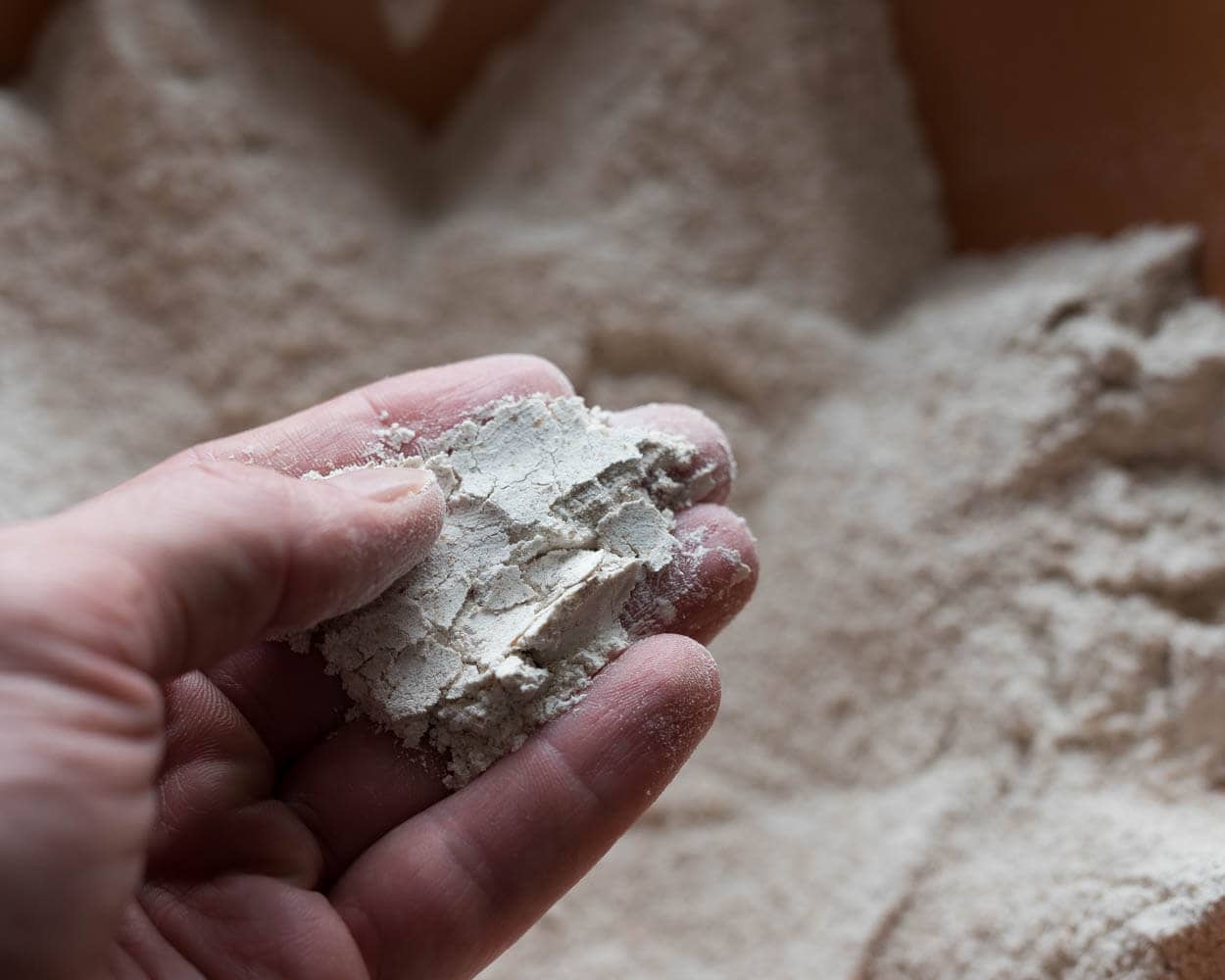
Using a manual mill is not a fast process, but with the right music playing through my headphones, hand-milling becomes a very meditative process. As I turn the crank it gives me time to step back from the hustle of the day and think about the upcoming bake, what am I going to test? What do I seek to learn? And maybe most importantly, how can I work this bread into each meal of the day?
With my bowl of freshly milled flour, I’m then ready to build my levain and later in the day start mixing.
The Perfect Loaf Country Sour with Fresh Milled Flour
I’ve been working on a formula that has a balance between enough freshly milled flour to bring out the flavor and enough white flour to get a beautiful and lofty rise. The following produces some of the best-tasting bread I’ve ever made and it is now my go-to when I plan to mill flour. I’ve also baked a few 100% freshly milled loaves and those are equally incredible, if not more; you can see those recipes and results here.
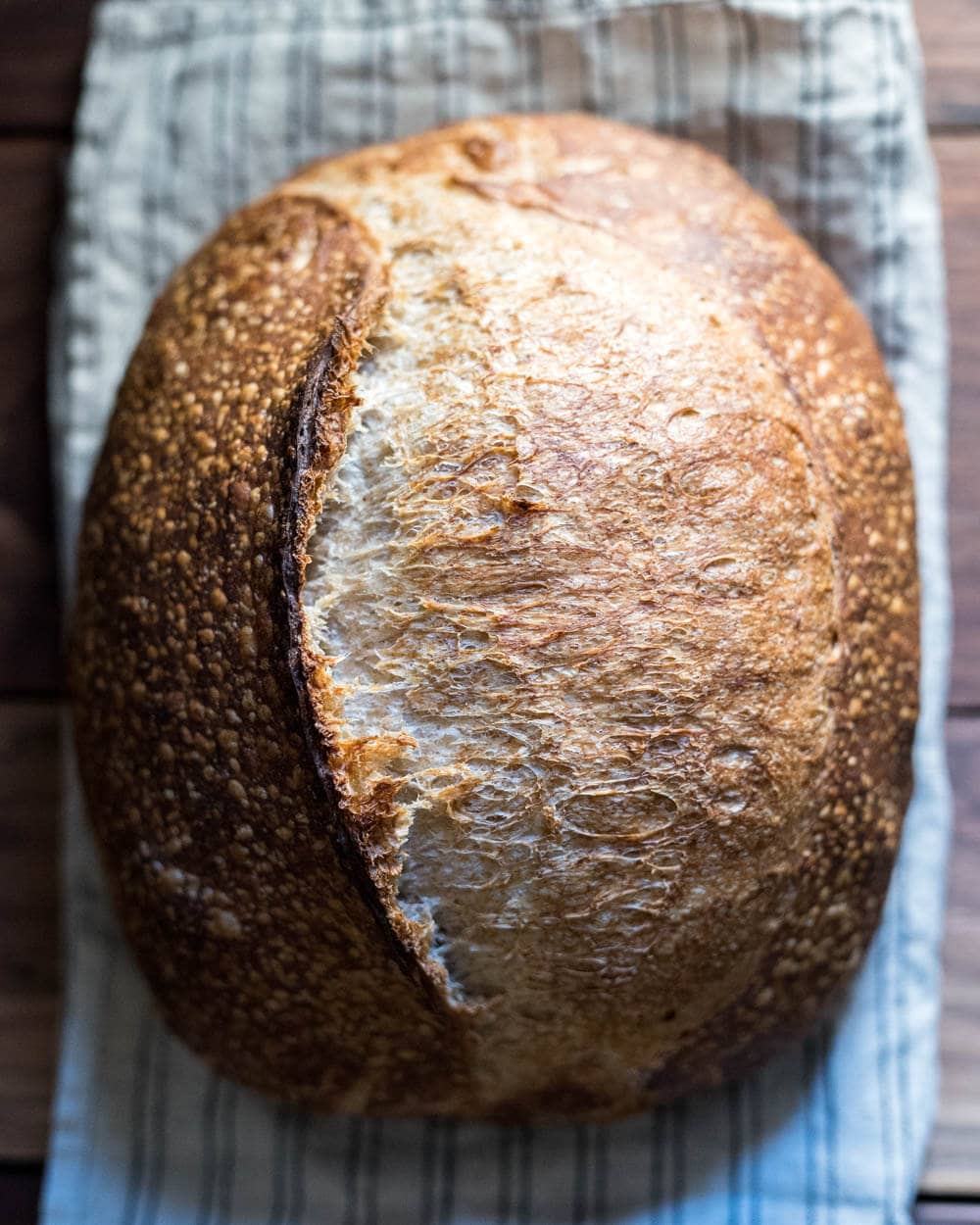
Overview
| Total dough weight | 1900 g |
| Pre-fermented flour | 7% |
| Hydration | 84% |
| Yield | 2 x 950 g loaves |
Levain Build
| Weight | Ingredient | Baker’s Percentage |
|---|---|---|
| 43g | Mature stiff starter (at 65% hydration) | 65% |
| 66g | Freshly Milled Organic Great River Hard Red Spring Whole Wheat | 100% |
| 43g | Water | 65% |
Formula
Note that the baker’s percentages listed below are with respect to the final dough ingredients and do not take into account the levain.
Target final dough temperature is 75°F (23°C). See my post on the importance of dough temperature in baking.
| Weight | Ingredient | Baker’s Percentage |
|---|---|---|
| 664g | Central Milling Organic Artisan Baker’s Craft, Malted (~11.5% protein) | 70% |
| 189g | Fresh Milled Organic Great River Hard Red Spring Whole Wheat | 20% |
| 102g | Central Milling Organic Type 70 | 10% |
| 815g | Water | 85% |
| 20g | Fine sea salt | 2% |
| 143g | Ripe, stiff levain | 15% |
Method
1. Levain – 8:00 a.m.
Build the levain in the morning after milling fresh flour. Store somewhere warm around 78°F (25°C) ambient.
2. Autolyse – 11:00 a.m.
Mix flour and water (reserve 50g water for the mix, later) very well in a bowl and cover. Ensure all dry flour is hydrated. Store near levain.
3. Mix – 2:00 p.m.
Using about 30g of the reserved water, incorporate levain build into autolyse and hand-mix thoroughly. Slap and fold for 6 to 8 minutes until dough holds shape well. Place dough back into the bowl and let rest for 5 minutes. Then, use remaining water, if necessary/desired, to incorporate salt into mixture. The dough will initially break apart and then come back together. Slap and fold an additional 3 to 6 minutes until the dough starts to catch air and strength is built enough to keep dough relatively in shape on the counter.
Transfer dough to a tub or thick-walled bowl for bulk fermentation.
4. Bulk Fermentation – 2:20 p.m.
At 80ºF bulk fermentation typically takes me somewhere between 3.5 and 4 hours. Watch the dough near the end–as I mentioned earlier, fermentation can quickly get out of control.
Perform four sets of stretch and folds (each set is a stretch and fold at North, South, East & West), one every 30 minutes.
5. Divide & Preshape – 6:20 p.m.
Divide the dough into two masses; each scaled at 950 grams. Lightly shape each mass into a round, cover with an inverted bowl or moist towel, and let rest for 25 minutes.
6. Shape – 6:45 p.m.
Shape each mass into a boule or batard, whatever your preference may be. For more instruction on how to shape this dough as an oblong loaf, see my post on how to shape a batard (with video!).
Once shaped, place the dough into a banneton lightly dusted with white rice flour, or into a basket with no flour but lined with a cotton tea towel (if you want a serious shine on the crust).
7. Proof – 6:50 p.m.
Retard immediately into the refrigerator at 39°F (3°C) for 12 hours.
8. Bake – Preheat oven at 6:00 a.m., bake at 7:30 a.m. (next day)
In the morning, preheat your oven to 450°F (232°C). You can bake these loaves in a Dutch oven or combo cooker or with my method for steaming your home oven.
Bake for 20 minutes at 450°F (232°C) with steam, and an additional 35 minutes without steam, until done to your liking.
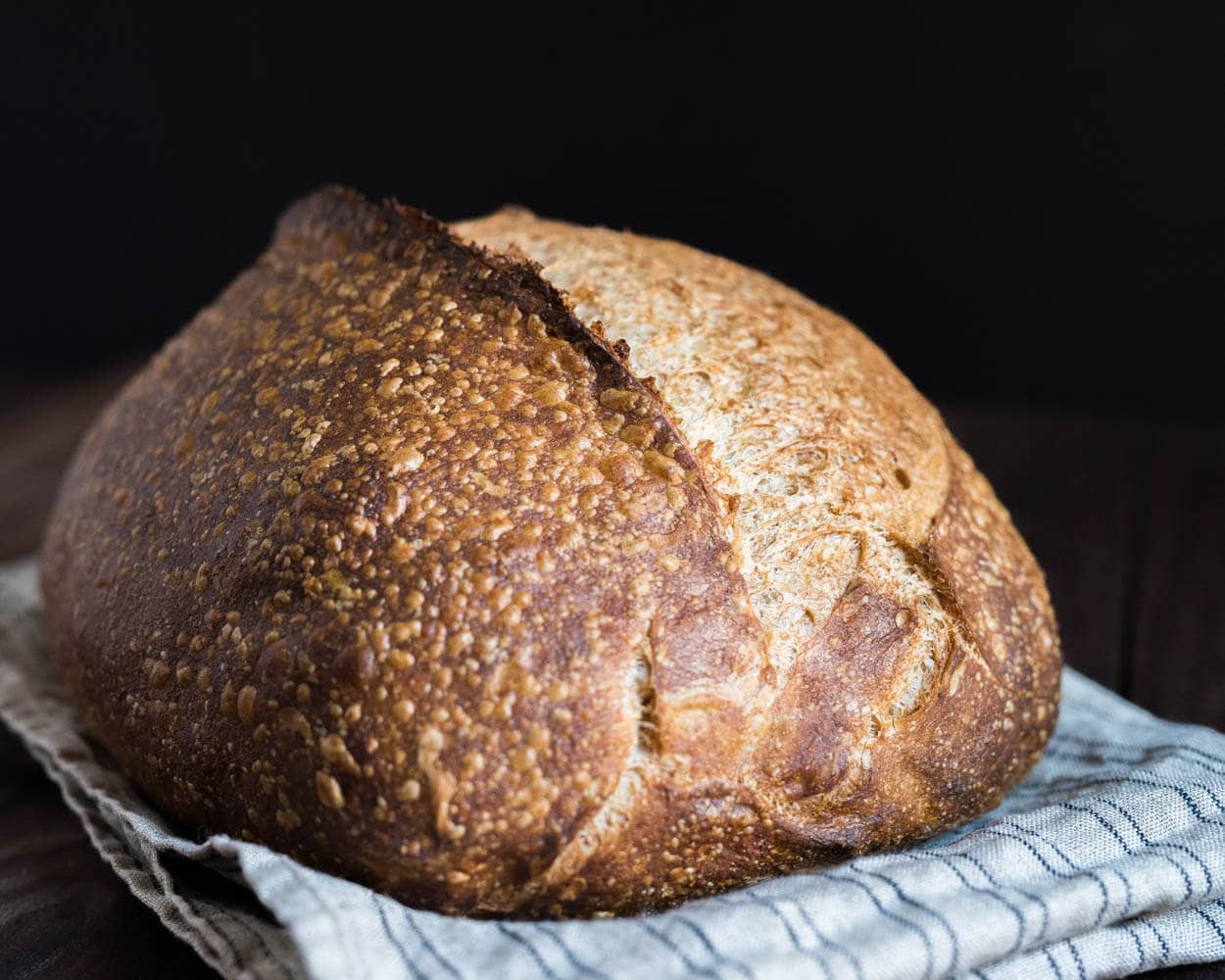
The resulting crust is incredibly thin, crunchy and wonderfully colored. You can see how much shine is brought forward by using freshly milled flour—just an immense amount of enzymatic activity. The crumb is soft and tender; it has a wonderfully complex flavor with a hint of sourness and a creamy hue throughout. The taste, well, I’ve already spoken at length on the flavor of this bread with freshly milled flour, it’s just delicious.
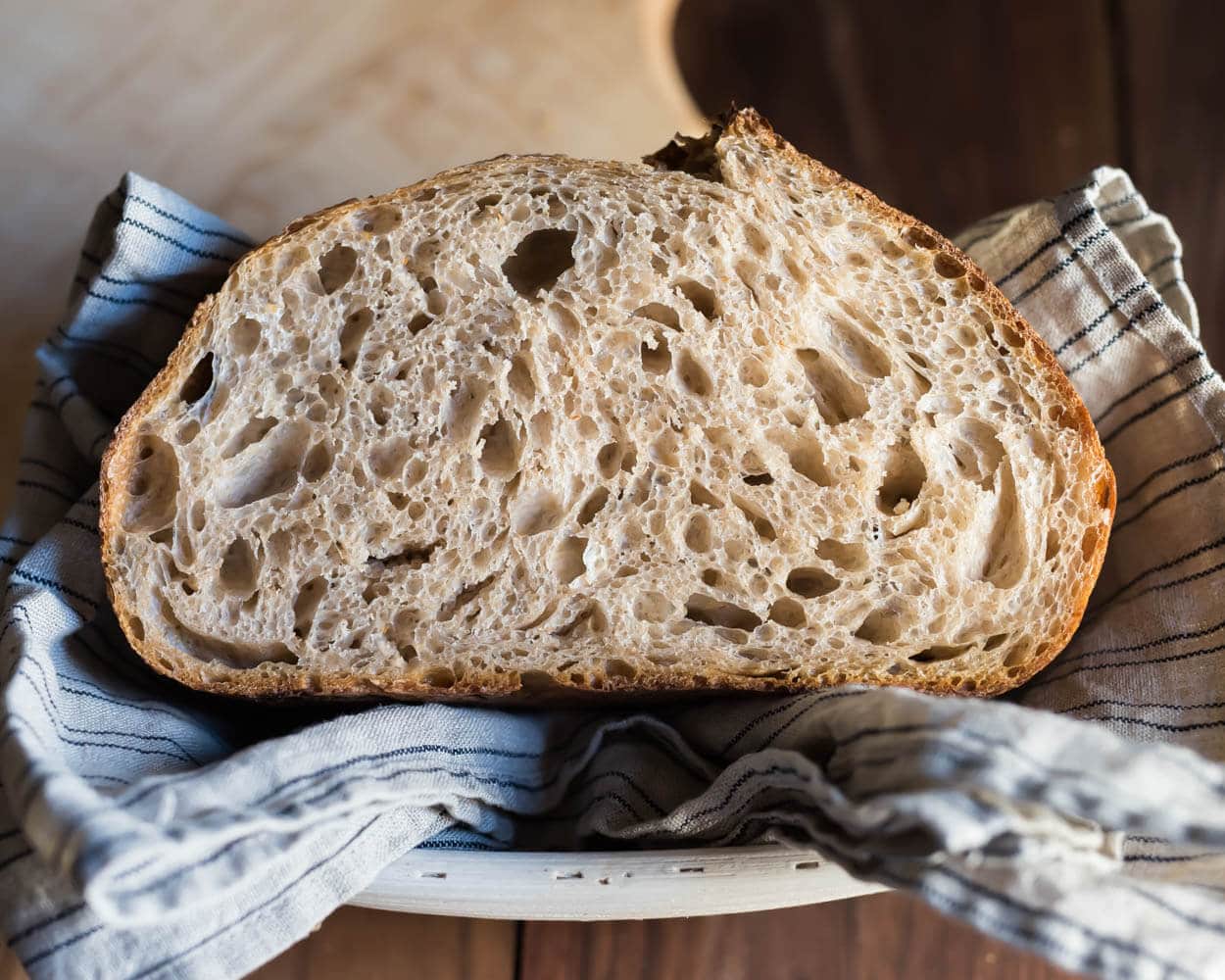
Parting Words
I’ve only just begun to scratch the surface of milling fresh flour at home, but thus far I’m incredibly excited about the results. I bake bread that genuinely tastes vibrant and fresh; it has levels of flavor that I’ve never experienced with my sourdough. The laborious act of hand-milling flour may not be possible, or desirable, for everyone but for me this part of the enjoyment: the transformation from berry to flour to bread—incredible.
After tasting the results I think my wife has finally accepted the sizeable red beast into our kitchen, and my “crazy” status has been downgraded to “normal”—well as normal as one can be when they wake before the sun rises to turn their kitchen into a flour mill.
In the same vein as my last post, and given the seasonality of these little gems, I toasted several slices of my sourdough using the recipe above and added organic figs, ricotta, and a light drizzle of local honey. Perfetto.
